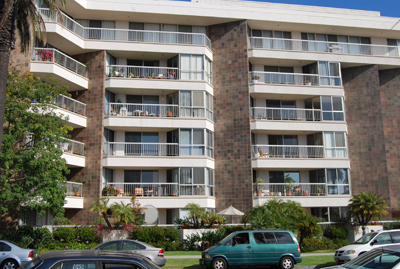SANTA MONICA—The Santa Monica City Council has expanded its anti-smoking legislation to include the ban of smoking within “25 feet of any multi-unit residential building,” according to the ordinance proposed at a Council meeting on July 27. The ordinance is directed at reducing the risk of second-hand smoke for non-smoking occupants of residential buildings that have sent several complaints to the City Council in the past year. The ordinance was approved by the Council in a 4-1 vote.
Since the last meeting in May, the Council had urged its staff to draft a new ordinance that would address the current legal definition for “multi-unit residential building” pertaining to designated smoking areas, due to heavy public response upon drafting its previous ordinance. Currently, there is a ban on smoking within “common areas,” but Council staff members sought to expand the current law to protect “personal use areas that might apply to one unit, but where the smoke is affecting the residents of other units.” According to the proposal, since the previous legislation for common area smoking was passed by the City Council, over 50 complaints have been received by the public, and staff responded by proposing to create a 25-foot, smoke-free zone outside all doors, windows and vents, mainly targeting patios and balconies.
The “common area” definition expansion is drastic because it includes the “25-foot radius regardless of whether it contains exclusive-use areas such as balconies, and regardless of whether it includes portions of adjacent properties such as single family homes,” according to the staff’s proposed ordinance. Another proposed solution would be to simply cover all outdoor common areas except for designated smoking areas, making it much easier for the public to discern between smoking permitted areas and non-smoking.
Another aspect to the proposed ordinance would require both condominium owners and landlords of tenant-occupied properties to research and “poll” its residents as to the smoking or non-smoking status of their unit, and then “designate and disclose” specific units within the residential building to all current and future potential occupants. According to the ordinance, “At least 10 other California cities already have similar requirements [for owners],” and once a designated smoking unit has been vacated, the occupant may change its status to non-smoking.
The staff didn’t include any specified penalties for smoking within a designated non-smoking unit, but due to the fact that designating a unit as “non-smoking” is completely voluntary by the occupant, and in light of increasing complaints of “second-hand smoke emanating from within residential units,” staff recommended that the Council could impose a small, private civil remedy, or consider relinquishing eviction protection from tenants within non-smoking units.
City Council had also requested of staff to consider ordinances on prohibiting smoking in “all newly constructed residential units at multi-unit properties,” but did not include such provisions in the proposed ordinance in anticipation of further guidance by the Council.






